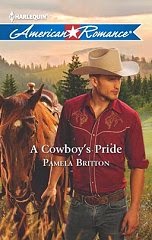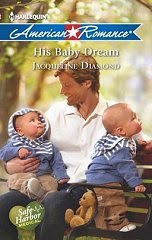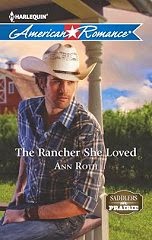Name/Pen Name: Barbara Keiler/Judith Arnold
Website: www.juditharnold.com
Years writing for the line: 1985-1994 (with a novella in 2004)
Number of books for the line: 30
Sample titles: I wrote HAR's first linked trilogy, "Keeping the Faith," in 1987. (The titles of the three books were PROMISES, COMMITMENTS and DREAMS.) Other favorites: SPECIAL DELIVERY, COMFORT AND JOY (winner, RT Reviewers Choice Award for best HAR), SURVIVORS, SAFE HARBOR (Rita finalist), SWEET LIGHT, JUST LIKE ROMEO AND JULIET.
Special memories of Harlequin American Romance: Vivien Stephens originally conceived HAR as a series grounded in reality--real people facing real problems and experiencing love as it occurs in real life. This was practically revolutionary at the time, and I loved both reading and writing these books. I was proud to be one of the line's early mainstays, along with authors like Rebecca Flanders, Barbara Bretton, Anne Stuart, Beverly Sommers, Anne McAllister, Pamela Browning and Kathleen Gilles Seidel. I think those early HAR's were some of the best series romances being published, not only at that time but for all time. It was a wonderful, creative place to work.
Now the Q & A:
1) How was the Harlequin American Romance line different from the other Harlequin lines?
Harlequin Americans were grounded in reality. I loved reading and writing romances in which the heroine was someone I could identify with. She didn't have to be a gorgeous orphan or a simpering virgin barely out of adolescence. She was a recognizable American woman facing real-life problems. Harlequin Americans weren't fairy-tale romances. They tackled subjects readers could identify with.
2) How did the Harlequin American Romances line change over the years you wrote for it?
In the early '90's, the line decided to shift its focus and become lighter, more fantasy-oriented and a little less realistic. It was this shift in tone and vision that prompted me to start writing for the Superromance line, which had started out in the '80's publishing more glamorous, exotic stories but then shifted to more grounded, realistic stories. Superromance was ready for me when I was ready for it.
3) How did writing for Harlequin American help you in your single-title career?
I started my writing career with Silhouette Desire, back when the books were 50-55,000 words. Writing for Harlequin American, when the books were 70-75,000 words, gave me the room to develop more complex plots and subplots, and to go deeper into the characters. I kept writing longer and longer (the jump to the 80-85,000-word Superromances was also necessary because after a while I needed those extra 10,000 words to tell my more complex stories) until ultimately I realized I needed the greater length of ST books to say everything I wanted to say. I should add that in the early days, the editors at Harlequin American were really open to everything in terms of subject matter. As long as there was a strong, believable romance at the center of the story, we writers were allowed, even encouraged, to explore unusual plots and to structure our stories in all different ways. One of the books I wrote for Harlequin American (SAFE HARBOR) spanned twelve years and broke into three sections, the first written in the heroine's POV, the second in the hero's and the third in both their POV's.
4). Describe a moment you remember related to Harlequin American Romance, either reading one, or a fan moment, or an editor moment, or….
Harlequin American came up with A Century of American Romance, a project that would span a year ('90-'91.) Each month, one Harlequin American would be set in a different decade in American history, starting at the turn of the 20th century and moving chronologically forward (I believe Anne Stuart and Barbara Bretton both had books in this program, too.) I volunteered to do the final book in the series, which would be set in the future, at the turn of the 21st century. My editor emphasized that she didn't want a futuristic science-fiction novel, but rather a book set in a future I could envision--a "possible" future.
The book I wrote, A>LOVERBOY, struck me as pretty fanciful as I was writing it. In 1989, when I wrote it, the Internet was new and mysterious, and a lot of computer text was prefaced with the A prompt (A>.) I conceived of a kind of Cyrano de Bergerac romance in which the hero--a coworker of the heroine's and a thorn in her side--wooed her through what would now be called Instant Messaging (which didn't exist back then), and he hid behind the nom-de-computer "Loverboy." While sparring with the actual hero, the heroine gradually fell in love with her computer Romeo.
Now, of course, people IM all the time (and sometimes hide behind fake web names.) But when I wrote A>LOVERBOY, none of that existed.
In the near-future world of A>LOVERBOY, people did short-distance commuting in solar-powered electric cars. (I'd love to see that come true!) Global warming had created an environment in which people had to wear lightweight clothing that covered their arms and legs to protect them from sunburn. Restaurants had heart-healthy entrees listed on the menus. (That came to pass!) A big earthquake struck California. (That's happened a couple of times since I wrote the book, alas.) Cloth diapers with Velcro tabs were in vogue. (They're now available.) People could call up whatever movies and TV shows they wanted to watch, when they wanted to watch them (like today's Tivo and on-demand.) So many of my predictions for the future came true that my editor started teasing me about picking her lottery numbers for her.
Best of all was reader reaction. I heard from lots of computer geeks who absolutely loved the book and related to it. I still run into people at conferences and book signings who remember having read and loved A>LOVERBOY, with its surprisingly accurate glimpse into a future that has since come to pass.
5) Do you hear from your Harlequin American readers who have also read your single titles? What do they say?
A lot of readers found me in single title and have then gone back and scoured the used book stores for my old Harlequin American titles. But other readers started with me back in the mid-80's and have stuck with me all these years. I still meet readers at booksignings who will show up with a pile of the old silver-colored early Harlequin Americans from their keeper shelves and ask me to sign them.
6) Harlequin American Romance is 25 years old. Describe writing some of the earlier books for the line. Were there any taboos? Words you couldn't use? What were the covers like? That sort of thing.
As I noted above, Harlequin Americans were a lot less restrictive than other lines being published in the mid-'80's. Given the concept of the line, the books had to be set mostly in the United States, although characters could travel outside the USA if necessary. And there had to be a central love story. Other than that, though, there weren't many restrictions. I was able to explore some edgy ideas in my Harlequin Americans, ideas no other publishers were touching back in the '80's: atheism and mega-churches; campus radicalism during the Vietnam era; Vietnam veterans struggling with post-traumatic stress syndrome; rape and recovery; freedom of speech; marriage in middle age... I don't mean to imply all my books were ponderous with capital-I Issues. A lot of the books I wrote for the line were comedies. But they were meaty, too. Characters weren't locked inside the hermetically sealed world of their relationship.
The early covers were busy. There was always a main picture of the hero and heroine, and then a smaller picture tucked into one corner of the cover that depicted something about the story. (I had an obscene name for the little "secondary element" pictures. I felt they made the cover look cluttered and tacky.) Then we went to what we called the "Easter Egg" covers. These were the opposite--stark and bland, just the hero and heroine against a blank white background. (The bindings were pastel-colored; hence the "Easter Egg" nickname.) A small box on the cover contained the book's title and the author's name. My book TURNING TABLES was the launch book for the new covers, and my editor told me my original title (INDEPENDENCE DAY) didn't fit inside the box, so I'd have to come up with a new title that would fit. I proposed a second title, which I liked even better: TAKING LIBERTIES. (This was my freedom-of-speech comedy, and the story ends with a July 4th parade.) But no, TAKING LIBERTIES didn't fit inside the box, either. TURNING TABLES was a title my editor came up with. It has nothing to do with the story at all--but it fit inside the box!
Needless to say, I didn't like those covers, either.
The third cover concept was a huge improvement, with the cover art encompassing the spine and spilling onto the back cover. These covers were introduced in 1991 or thereabouts.
Bio:
When I was a child, I never really thought about becoming an author. Creating stories was simply something I did, like eating, sleeping and hanging out with my friends. I could not remember a time when my mind wasn't full of stories begging to be put into words. Even before I knew how to write, I used to tell myself bedtime stories when I couldn't find an adult to tell me one. I still have a copy of my first short story, written when I was six. It told the tale of a lonely bear. None of the other animals in the forest wanted to play with him. Then he met a boy, and they became friends and lived happily ever after.
I went on to write countless stories, poems and theater pieces. I wrote the fourth grade class play. In sixth grade, I wrote an award-winning poem honoring National Dental Week. As a teenager, I wrote dozens of short stories about adolescent angst, as well as free-verse poetry railing against war, oppression, hypocrisy and other great evils. I wrote for my high school's creative writing magazine and edited the school newspaper. But it never occurred to me that I might actually become an author. In college, I wrote a play that won a money prize and was produced on campus. I took this as a sign and decided to become a playwright. Over the next ten years, I wrote several plays and had them professionally produced at regional theaters around the country. All the while, I continued to write short stories and novels. Eventually I burned out on theater work. It required me to travel, usually at my own expense, to the theaters staging my work, and once there I had to deal with directors, actors and producers who all wanted to rewrite my scripts. Since I found it nearly impossible to earn a living as a playwright, I also taught bonehead English at a couple of local colleges. My husband dared me to take a year off from teaching to see if I could write and sell a novel. How much did I dislike teaching bonehead English? So much that I planted myself at my typewriter and wrote non-stop, one eye on the page and the other on the calendar. Before the year was up, I had sold a romance novel to Silhouette Books. That first novel, Silent Beginnings, came out in October, 1983. My first son also came out in October, 1983. Needless to say, it was an eventful month. Since then, I've written more than eighty-five novels which have been published by Silhouette, Second Chance at Love, and Harlequin's Temptation, American and Superromance lines, as well as MIRA Books. Nine books after Silent Beginnings, right between False Impressions and Flowing to the Sky, I also gave birth to a second son. My family lives in a small town not far from Boston, Massachusetts. My three boys-one husband and two sons-take good care of me. They make me laugh and keep me supplied in chocolate. Since chocolate and laughter are essential to my creativity, I guess they deserve a little credit for my having become an author.





5 comments:
Judith/Barbara-
What a terrific interview! I love hearing about the covers and the changes in content over time. Thank you for taking the time to share.
Thanks for visiting, Judith! I loved reading about Loverboy! Now I guess I'm going to have to go hunt that book down.
Shelley
Like Shelley I am going to have to go open some boxes stored in my spare bedroom and find Loverboy. I only hope it wasn't one that I lent out only to not get it back.
Great interview.
I enjoyed reading about how the covers evolved.
Judith, I love the story about coming up with titles that would fit inside the box. LOL, thanks for sharing that with us!
Post a Comment